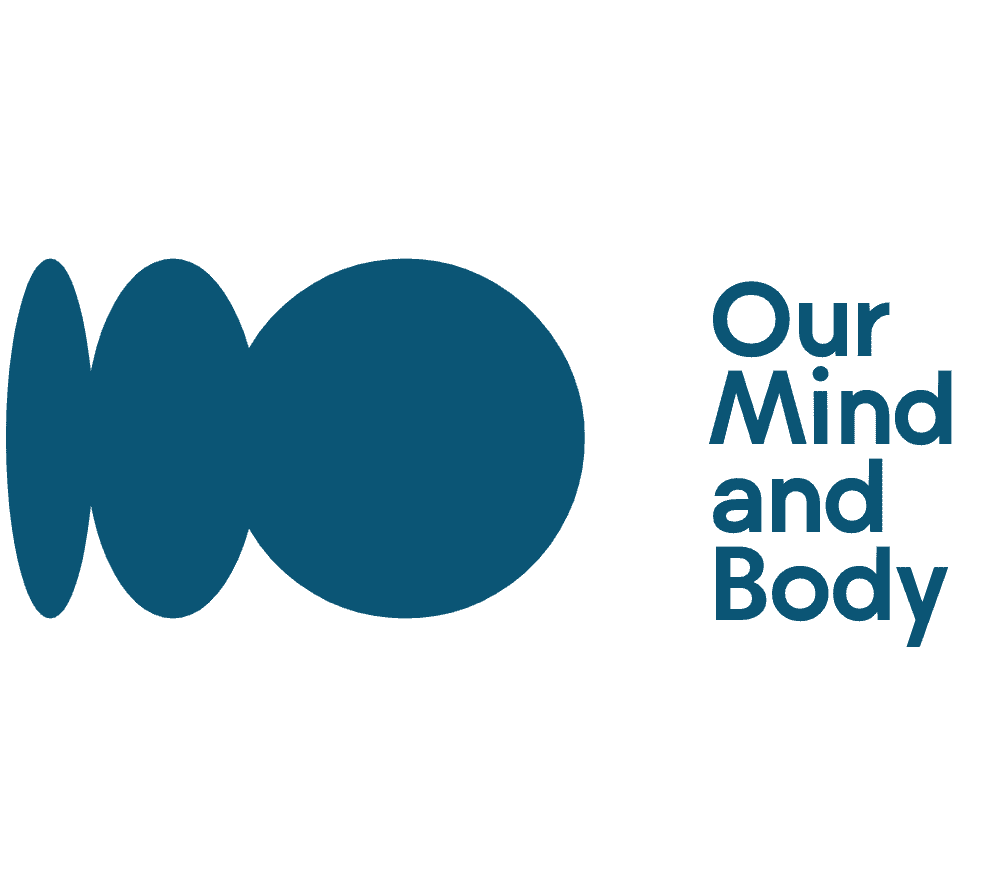Inspiration
Hard Truth – You Can’t Make Everyone Happy, And If You Try, You Will Lose Yourself

Happiness is something we often pursue but rarely achieve. Like a butterfly, it slips away just when we feel we are about to grasp it.
This hard truth – that you cannot make everyone happy, and if you try you will lose yourself – has been pondered since time immemorial.
In this article, we explore the implications of trying to please everybody, and how we can use unhappiness as an opportunity for growth. We discuss practical ways to practice self-care and develop healthy coping skills while learning to accept the reality of our own limitations.
Finally, we emphasize the importance of focusing on what we can control in order to achieve greater satisfaction in life.
Understanding Why You Can’t Make Everyone Happy
Understanding why it is impossible to please all individuals is a necessary step in avoiding self-sacrifice.
To foster resilience, it is important to recognize that everyone has different needs and expectations, and not every one of these will be met.
Honoring feelings without compromising one’s own beliefs can help to ensure that no one is left feeling neglected or undervalued.
Acknowledging this truth can also aid with understanding our own motivations when engaging with others.
Examining the reasons why we are willing to go above and beyond for certain people, while ignoring the needs of others, is essential for maintaining healthy relationships.
Taking time to reflect on our actions can help us become aware of any negative patterns or behaviors we may have adopted in an effort to make everyone happy at once – a feat which ultimately cannot be achieved.
Examining Your Own Motivations
Considering how difficult it is to satisfy all parties in any given situation, it can be beneficial to examine one’s own motivations prior to attempting a task. Prioritizing needs, recognizing triggers, and understanding the difference between what we can and cannot control are important elements of self-examination.
The following list provides guidance in examining our motivations:
-
Assess the expected outcomes of a task or decision;
-
Understand where our resources and time are best directed;
-
Evaluate if we are taking on more than we can realistically handle;
-
Reflect on why we feel responsible for every outcome.
In considering these factors, individuals may realize that they have been attempting to make everyone happy as an attempt to gain approval from others or avoid facing their own fears and anxieties. By exploring the underlying reasons behind wanting to please everyone, people can gain insight into themselves, which can help them make decisions that allow them to stay true to themselves without sacrificing their values or principles.
In doing so, individuals move beyond simply trying to make others happy and instead focus on finding internal peace through making choices that honor who they are at their core.
Exploring the Impact of Trying to Please Everyone
Trying to please everyone can create an overwhelming feeling due to the pressure of remaining constantly attentive to others’ wants and needs.
This can lead to a loss of focus on one’s own needs and values, as they become devoted entirely to fulfilling the demands of others.
Ultimately, attempting to make everyone happy can result in feelings of exhaustion and dissatisfaction with oneself.
Feeling Overwhelmed and Exhausted
Navigating the delicate balance of expectations and obligations can be an overwhelming endeavor, as if one is walking a tightrope with each step. There may be an overburdening feeling to fulfill responsibilities, while also seeking balance between others’ needs and values. This can lead to feelings of being overwhelmed, exhausted, and even resentful:
-
Overwhelmed – Constantly trying to meet everyone’s demands without any respite can leave one feeling emotionally drained and stressed out.
-
Exhausted – The need to constantly give of oneself without any time for recuperation can cause physical exhaustion.
-
Resentful – Feeling taken for granted or unappreciated for all of the effort expended in attempts to please everyone else can breed resentment or bitterness towards those being served.
In these situations, it is easy to lose sight of one’s own needs and values.
Losing Sight of Your Own Needs and Values
When attempting to meet the expectations and obligations of others, one can quickly become disconnected from their own needs and values. This disconnection can be even more apparent when attempting to make everyone happy, as it often requires taking on an unrealistic amount of responsibility that can lead to burnout.
Making impactful choices is key in avoiding this situation, as it involves setting boundaries and prioritizing one’s own well-being first.
By understanding how important self-care is in burnout prevention, we can reframe unhappiness as an opportunity for growth instead of a burden requiring continuous effort with no reward.
Reframing Unhappiness as an Opportunity for Growth
Reframing unhappiness as an avenue for growth can create a bridge to explore the possibilities of personal transformation. When we embrace change and cultivate a sense of balance, we open up space for new perspectives and self-discovery.
By understanding that we cannot make everyone happy, even if it is our intention, we can reframe our own unhappiness as an opportunity to grow and learn. It gives us time to think deeply about ourselves and how we interact with others in order to build healthier relationships in the future. In this way, it allows us to realize our strengths and weaknesses while also recognizing those of others.
Through this process of self-reflection, we can understand the importance of practicing self-care and self-compassion instead of trying to please everybody else. This shift in perspective provides us with greater insight into what truly matters most in life and encourages us towards a path of personal fulfillment as opposed to external validation.
Moving forward from here, we can take steps towards bettering ourselves without compromising our wellbeing or sacrificing our values.
Practicing Self-Care and Self-Compassion
The recognition that it is not possible to make everyone happy can be a difficult one to accept. In order to move past this difficulty and discover personal growth, individuals may benefit from acknowledging their own emotions and practicing self-love.
Acknowledgement of one’s feelings allows for the individual to become aware of what they truly need in order to feel content. Practicing self-love then enables them to act on those needs without guilt or worry about pleasing others.
It is important for individuals to understand that by taking care of themselves, they are engaging in an act of self-care that will ultimately help them reach a state of emotional well-being.
Without proper self-care, individuals risk losing sight of their own needs and values which can have detrimental effects on their mental health. Without acknowledging emotions and practicing self-love, it is easy for an individual to get caught up in other people’s expectations or demands at the expense of their own wellbeing. This type of behavior has been linked with increased levels of stress and anxiety as well as other forms of mental illness such as depression or posttraumatic stress disorder (PTSD).
Therefore, understanding the importance of nurturing oneself through acts like acknowledgement and self-love is critical in allowing individuals to maintain a healthy balance between fulfilling their own needs while still being able to meet the expectations placed upon them by others.
With this knowledge firmly established, the next step involves learning how best to set boundaries when interacting with others so as not compromise one’s emotional wellbeing further.
Learning to Set Boundaries
Establishing boundaries is an important step in learning to prioritize one’s emotional wellbeing while still engaging with others. Setting limits can help build trust, create mutual respect and keep relationships stable. It also allows for effective communication between individuals, as it provides a framework for understanding that keeps interactions respectful.
The process of setting boundaries involves making conscious decisions about how we want to interact with people and how much time and energy we are willing to devote to them. This may include limiting the number of requests or expectations from others, being honest about one’s limitations and speaking up if a boundary is crossed. Additionally, developing healthy coping skills such as self-care activities or taking breaks is essential for maintaining personal wellbeing when faced with difficult conversations or challenging situations.
It is important to note that even though setting boundaries can lead to more positive relationships, it does not guarantee everyone will be happy all the time. It can be hard to accept this fact but ultimately accepting it allows us to take care of ourselves while still engaging in healthy relationships with those around us.
To summarize: Establishing clear boundaries is essential for fostering healthier relationships while protecting one’s emotional wellbeing; this involves building trust through effective communication, honestly expressing one’s limitations and developing healthy coping skills when needed. As hard as it may be at times, learning to set these boundaries helps us maintain balance despite an inability to please everyone all the time. With this knowledge comes a greater sense of freedom and acceptance which then leads into developing healthy coping strategies going forward.
Developing Healthy Coping Skills
Working to develop healthy coping skills can help one achieve a sense of balance and freedom when dealing with difficult conversations or situations. It starts with identifying triggers that may lead to an emotional reaction and developing ways to cope with these triggers in a positive way. This often requires resilience, as well as the realization that not everyone will be pleased with the outcome of the situation.
Managing expectations is key, so it is important to understand that one cannot control the outcome of every situation—but they can strive for their own personal growth and happiness by learning how to effectively manage emotions and stressors. When this happens, individuals gain more clarity on what is important in their lives and can then focus on positively engaging with those around them without worrying about whether they will please others or not.
Taking such steps allows individuals to be true versions of themselves without compromising their integrity or peace of mind.
Understanding That You Can’t Control the Outcome
Navigating difficult conversations and situations often requires the acceptance that one cannot control the outcome, necessitating a focus on personal growth and happiness instead. This truth can be hard to accept, as it may lead to feelings of guilt or shame for not being able to make everyone happy.
In order to cope with this difficult reality, it is important to focus on the following points:
- Avoiding confrontation in order to protect oneself from further distress;
- Seeking validation by finding comfort in what one can control;
- Recognizing that unhappiness is inevitable and learning how to accept it without taking responsibility for it.
By understanding these three points, we learn how to better process our emotions and take appropriate action when faced with uncomfortable situations where we are unable to change the outcome – a key element of emotional maturity.
Transitioning into this next stage of self-awareness helps us develop healthier coping skills and move away from seeking approval or attempting to please others at our own expense.
Learning to Accept Unhappiness
Gaining the ability to accept unhappiness is an essential step for emotional maturity and personal growth. Understanding that it is not possible to make everyone happy, even if you put in your best effort, can be difficult to embrace. To learn how to do this, one must first recognize the ways in which sadness may manifest itself. Grieving loss and embracing change are two of the most common forms of responding to unhappiness.
| Grieving Loss | Embracing Change |
|---|---|
| Feeling Sad | Move On |
| Loneliness | Letting Go |
| Anxiety | Adapting |
| Anger | Overcoming |
The process of learning to accept unhappiness requires self-reflection and understanding how our emotions affect our behavior and outlook on life. It’s important to remember that although no situation will ever bring complete joy or contentment, there are still ways to find meaning in spite of despair or pain. By recognizing that some things in life cannot be controlled, we can begin working towards a more positive mindset while accepting any unpleasant realities that come our way. Taking these steps toward inner growth can help us become better equipped for facing future challenges with resilience and strength rather than fear or anxiety. Without further hindering progress by dwelling on what cannot be changed, transitioning into focusing on what can be controlled allows for a healthier approach towards living a meaningful life.
Focusing on What You Can Control
Moving beyond the notion of learning to accept unhappiness, it is important to focus on what we can control. In order to live a fulfilling and successful life, it is essential that we manage our expectations and prioritize our needs.
This means understanding that not everyone will be pleased with us no matter how hard we try. We must accept that this is part of life and strive towards creating balance in our lives between taking care of ourselves while still considering the feelings and needs of others.
Managing expectations is an important step when trying to make all parties happy. We need to understand that no one, including ourselves, will be pleased in all situations; therefore, we have to set realistic goals for ourselves and others. This does not mean settling for less than what we deserve or expect from someone else but rather recognizing the limitations in any given situation and looking for ways to make the most out of it.
Prioritizing needs entails understanding which ones are most important at any given time so that we do not sacrifice our well-being in pursuit of pleasing someone else. By focusing on what matters most first and allowing everything else to fall into place after, it becomes easier to stay focused on the task or goal at hand without feeling overwhelmed by additional anxieties or stressors caused by trying too hard too please everyone around us.
It also helps build resilience as well as self-awareness which are key components in achieving success in life without losing oneself along the way.
Frequently Asked Questions
What are some specific steps I can take to practice self-care?
Taking care of oneself is a crucial step in leading a healthy and fulfilling life, yet many struggle to prioritize their own needs. Navigating feelings of guilt that come with carving out time for self-care can be difficult, but it is necessary if one is to make any progress.
As the saying goes, “you can’t pour from an empty cup”; without taking the time to fill up your well of resources, you will have little left to give others. To practice self-care and build resilience amidst societal expectations, it is important to establish boundaries and recognize what makes you feel emotionally replenished.
Try setting aside at least 30 minutes each day for yourself, whether that be doing something creative or simply taking a walk in nature – use this time to check in with yourself and reconnect with your inner voice.
How can I learn to set boundaries with others in a way that is respectful and effective?
Setting boundaries with others in a respectful and effective way is an important part of self-care. It involves knowing when to say ‘no’, being comfortable with letting go, and being assertive in communication.
Establishing boundaries can be difficult at first, but it can help build trust within relationships and foster a stronger sense of self-respect. It is beneficial to practice active listening, which involves trying to understand the other person’s perspective while also expressing your own needs clearly.
Additionally, taking time for yourself and engaging in activities that are calming can help create space between you and those around you.
What are some practical tips for reframing unhappiness as an opportunity for growth?
Recent studies have shown that up to 80% of people are able to reframe their unhappiness as an opportunity for growth. This process of emotional resilience is essential in order to maintain a healthy balance between serving others and serving one’s self.
Practical tips for achieving this include:
- Setting aside time for self-reflection
- Being mindful of how emotions can affect behaviour and decisions
- Using creative outlets as a way to express difficult feelings
It is important to remember that growth often comes from adversity, and by building emotional resilience one can learn how to navigate challenging situations with grace.
What are some examples of healthy coping skills I can use when I’m feeling overwhelmed?
When feeling overwhelmed, it is important to practice healthy coping skills. This can include fostering connection with others, such as friends and family, and prioritizing a balanced lifestyle.
Fostering connections helps to create a supportive network of people who can provide comfort and understanding when needed. Prioritizing balance involves creating manageable goals for the day that allow for adequate rest and self-care activities.
Additionally, engaging in calming activities like yoga or meditation may help reduce stress levels. With these coping strategies in place, individuals can feel empowered to take control of their emotions and mental wellbeing during difficult times.
How can I learn to accept unhappiness without becoming overwhelmed by it?
Accepting unhappiness is a difficult challenge that requires a great deal of self-reflection.
Finding purpose and meaning in life can help to provide an avenue for understanding the situation and provide motivation to move forward.
Through this process, individuals can learn how to confront their difficult emotions without allowing them to spiral into overwhelming feelings of despair.
It is important to remember that although one cannot make everyone happy all the time, by focusing on fulfilling one’s own sense of purpose, it is possible to find balance and inner peace even when facing difficult circumstances.
Conclusion
Ultimately, one must accept the fact that it is impossible to make everyone happy. Instead of expending energy on trying to please everyone, individuals should focus on self-care and developing healthy coping skills. This will help ensure they are not sacrificing their own happiness in pursuit of another’s contentment.
It may be difficult, but by embracing this reality, individuals can step into a new era of growth and self-discovery. Time-honored wisdom such as ‘you can’t please all the people all the time’ has never been more applicable than today in our ever-changing world.
Meet Kalinda, the passionate and visionary Editor-in-Chief of OurMindAndBody.com. Kalinda is a beacon of light in the realm of holistic well-being, and her mission is to positively impact the lives of others by inspiring them to embrace a healthier and more fulfilling lifestyle.
With a deep-rooted love for meditation, yoga, and spirituality, Kalinda’s journey toward self-discovery and personal growth started at a young age. She found solace and strength in these practices, which not only helped her cope with the challenges of life but also provided her with a profound sense of purpose. Eager to share the transformative power of these ancient disciplines, Kalinda embarked on a path to spread awareness and understanding.
Inspiration
Unveiling The Depths Of Spiritual Warfare

Spiritual warfare is a complex battle with various challenges and strategies at different levels. Essentially, this battle is against evil forces led by Satan, whose aim is to shake our faith and hinder our relationship with God.
In this article, we will delve into the depths of spiritual warfare, exploring the various levels of attack, strategies to overcome the devil, and effective ways to fight against spiritual attacks.
By understanding the nature of this battle and equipping ourselves with the right tools, we can navigate this spiritual warfare and align ourselves with God’s will.
Key Takeaways
- Spiritual warfare involves battling against Satan’s forces and can consume individuals who are not properly aligned with God’s purposes.
- There are three levels of spiritual warfare: flesh, devil, and worldly powers, with the highest level being level 3.
- The devil seeks to deceive, tempt, and destroy, but believers can overcome him through prayer, fasting, scripture reading, and maintaining a personal relationship with God.
- Effective strategies to combat the devil and engage in spiritual warfare include establishing a relationship with God through communication and obedience, engaging in activities that please God, and surrounding oneself with positive influences such as uplifting music and spiritual fellowship.
Levels of Spiritual Warfare
I think it’s important to understand the levels of spiritual warfare in order to effectively combat these battles. By recognizing spiritual attacks, we can better equip ourselves to fight back.
The levels of spiritual warfare include the flesh, devil, and worldly powers. The flesh level involves tangible battles that we face in our physical bodies and circumstances. The devil level focuses on the external enemy, Satan, who seeks to deceive and destroy. Lastly, the worldly powers level encompasses attacks on our faith and belief systems by societal influences.
Spiritual armor plays a crucial role in defending against these attacks. To combat these battles, we must arm ourselves with prayer, faith, and the word of God.
By staying vigilant and aware of the different levels of spiritual warfare, we can effectively overcome and align ourselves with God’s will.
Strategies Against the Devil
Establishing a personal relationship with God through communication and obedience can be a powerful strategy to overcome the devil’s temptations and deceptions.
In the midst of spiritual warfare, it is crucial to equip ourselves with spiritual armor to withstand the attacks of the devil.
Prayer, in particular, is a potent weapon that allows us to communicate with God and seek His guidance and strength.
Through prayer, we can overcome the devil’s attempts to deceive and tempt us, as we draw closer to God and align ourselves with His will.
Prayer not only strengthens our relationship with God but also empowers us to resist the devil’s influence.
By regularly engaging in open and honest communication with God, we can equip ourselves with the spiritual armor necessary to overcome the devil’s attacks and stand firm in our faith.
Overcoming Spiritual Attacks
To overcome spiritual attacks, it is important to recognize the signs and seek guidance and strength from God.
Spiritual warfare can manifest in various ways, including behavior changes and unexplained physical symptoms. By being aware of these signs, we can identify when we are under attack and take appropriate action.
Defending against spiritual attacks involves establishing a strong relationship with God through prayer, fasting, and studying the Bible. These practices help us to stay connected to God’s power and truth, enabling us to resist the enemy’s influence.
Additionally, surrounding ourselves with positive influences such as uplifting music and spiritual fellowship can provide protection and support.
It is crucial to remember that spiritual attacks are not limited to believers; non-believers can also be targeted. By recognizing spiritual warfare and actively defending against it, we can overcome evil and align ourselves with God’s will.
Frequently Asked Questions
How can I differentiate between a spiritual attack and a normal life struggle?
Understanding spiritual discernment is crucial in differentiating between a spiritual attack and a normal life struggle. Recognizing signs of spiritual attacks, such as sudden behavior changes or unexplained physical symptoms, can help discern the source of the struggle.
Can spiritual warfare affect my physical health?
Yes, spiritual warfare can have a mental and emotional impact which can in turn affect physical health. However, through engaging in spiritual warfare, healing can occur on all levels, including physical well-being.
Is it possible to unknowingly invite spiritual attacks into my life?
Yes, it is possible to unknowingly invite spiritual attacks into my life. Recognizing spiritual attacks involves being aware of signs such as behavior changes and unexplained physical symptoms. It is important to protect oneself through prayer and positive influences.
Are there specific prayers or rituals that can protect me from spiritual attacks?
Prayer techniques and spiritual cleansing practices can provide protection from spiritual attacks. By seeking God’s guidance, regularly praying, and engaging in rituals such as smudging or anointing, I can create a spiritual shield against negative forces.
Can spiritual warfare affect my relationships with other people?
Spiritual warfare can impact my relationships by affecting my emotional well-being. Forgiveness plays a crucial role, as it allows for healing and restoration. It is important to address the spiritual battles within ourselves to maintain healthy connections with others.
Conclusion
In conclusion, spiritual warfare is a complex battle that occurs on multiple levels. It involves attacks on faith and belief systems, with the ultimate goal of undermining humanity’s relationship with God. This battle includes the flesh, the devil, and worldly powers.
However, individuals can overcome the devil’s tactics by establishing a personal relationship with God and engaging in spiritual practices. These practices include prayer, fasting, and studying the Bible.
Some may argue that spiritual warfare is subjective and lacks tangible evidence. However, it is important to remember that the battle against evil is not always visible. Its effects can be felt through behavior changes and unexplained physical symptoms.
To effectively fight against spiritual attacks, individuals must actively seek God’s guidance and surround themselves with positive influences. By doing so, they can align themselves with God’s will and overcome the challenges of spiritual warfare.
Meet Kalinda, the passionate and visionary Editor-in-Chief of OurMindAndBody.com. Kalinda is a beacon of light in the realm of holistic well-being, and her mission is to positively impact the lives of others by inspiring them to embrace a healthier and more fulfilling lifestyle.
With a deep-rooted love for meditation, yoga, and spirituality, Kalinda’s journey toward self-discovery and personal growth started at a young age. She found solace and strength in these practices, which not only helped her cope with the challenges of life but also provided her with a profound sense of purpose. Eager to share the transformative power of these ancient disciplines, Kalinda embarked on a path to spread awareness and understanding.
Inspiration
The Mighty Gamabunta: Jiraiya’s Spiritual Beast

In the Naruto series, Gamabunta is known as Jiraiya’s legendary mystical creature and spiritual companion, showing impressive strength. With his ability to change shape, summon smaller toads, and utilize natural energy, Gamabunta proves to be a valuable ally to Jiraiya.
Together, they form an unstoppable team, communicating telepathically and coordinating their attacks in battle.
In this article, we will delve into the description, abilities, various names, and the first appearance of the mighty Gamabunta, shedding light on his significance in the Naruto universe.
Key Takeaways
- Gamabunta is Jiraiya’s mystical animal companion, a giant toad from Mount Myoboku.
- Gamabunta provides strategic support in combat, including transportation and close-range combat.
- Gamabunta has unique abilities such as shape-shifting, summoning smaller toads, and absorbing natural energy.
- The most commonly accepted name for Jiraiya’s spiritual beast is Gamabunta.
Description and Abilities
Gamabunta, Jiraiya’s spiritual beast, is a giant toad with incredible abilities. These abilities include shape-shifting, summoning smaller toads, and absorbing natural energy. Gamabunta plays a crucial role in Jiraiya’s training and development as a shinobi.
With Gamabunta’s strategic support and formidable combat skills, Jiraiya is able to enhance his combat capabilities and transportation. The strong bond between Jiraiya and Gamabunta is evident in their telepathic communication, which increases coordination and effectiveness in battle.
Furthermore, Gamabunta’s significance extends beyond Jiraiya to Naruto. As a summoning animal for both Jiraiya and Naruto, Gamabunta has a profound impact on their growth as shinobi. Through their encounters and battles together, Gamabunta provides guidance and support to Naruto, helping him develop his skills and overcome challenges.
This relationship between Naruto and Gamabunta showcases the importance of mentorship and the influence of spiritual beasts in the Naruto universe.
Various Names
Toad Boss, also known as the Great Toad Sage, is a prominent character in the Naruto series and serves as my loyal companion throughout my journeys.
Gamabunta holds great cultural significance in Japanese folklore, as it is based on the mythical creature known as the toad.
In the Naruto universe, Gamabunta plays a crucial role in shaping my character development. As a summoning animal, Gamabunta’s immense power and wisdom have guided me through countless battles and taught me important life lessons.
Our telepathic communication enhances our coordination, allowing us to strategize effectively in combat.
Gamabunta’s presence also showcases my growth and maturity as a ninja, as I gain the respect and trust of such a formidable and revered beast.
Together, we have faced many challenges, and our bond continues to strengthen as we overcome obstacles and protect the ninja world.
Summoning and First Appearance
Summoning my loyal companion was a pivotal moment in my battle against Orochimaru. An incredible force emerged to aid me – the Summoning Technique, a jutsu I had mastered. It allowed me to summon Gamabunta, the mighty toad, to the battlefield.
As he appeared in a swirl of smoke, Gamabunta’s massive size and power commanded attention. His first appearance showcased his formidable abilities. He unleashed a devastating Giant Toad Body Slam, crushing our enemies with his sheer strength.
With Gamabunta by my side, I felt invincible. His impressive water-style jutsu and unrivaled combat skills were at my disposal. The significance of Gamabunta’s first appearance in Naruto cannot be understated. It marked the beginning of a partnership that would prove crucial in numerous battles to come.
Frequently Asked Questions
How did Jiraiya first form a bond with Gamabunta?
Jiraiya formed a bond with Gamabunta through the Summoning Technique, where he summoned the giant toad to aid him in battle. Their bond is significant as Gamabunta provides strategic support and can understand human language, allowing for better coordination with other summoning animals.
Can Gamabunta communicate with other animals besides Jiraiya?
No, Gamabunta cannot communicate with other animals besides Jiraiya. His ability to communicate only extends to telepathic communication with Jiraiya, which enhances their coordination in battle but does not involve other animals.
What is the origin of Gamabunta’s name?
The name Gamabunta holds significant meaning in Japanese folklore. It symbolizes the connection between Jiraiya’s ninja techniques and the wisdom of the toad sage. Gamabunta also acts as a mentor and protector for Jiraiya, guiding him in his early days as a ninja.
Are there any other summoning animals that Jiraiya can call upon besides Gamabunta and Gamakichi?
No, there are no other summoning animals that Jiraiya can call upon besides Gamabunta and Gamakichi. Jiraiya’s summoning technique is unique and powerful, placing him among the top summoners in the Naruto series.
Has Gamabunta ever been defeated in battle?
In the world of Naruto, Gamabunta is a force to be reckoned with. Compared to other summoning animals, he is incredibly powerful. However, he does have his weaknesses. While he can defeat many spiritual beasts in battle, he is primarily limited to fighting alongside Jiraiya.
Conclusion
In conclusion, Gamabunta is a formidable and powerful ally to Jiraiya in the Naruto series. With his shape-shifting abilities, summoning smaller toads, and absorbing natural energy, Gamabunta proves to be a formidable force in combat.
His telepathic communication with Jiraiya enhances their coordination and makes them a nearly invincible duo. Known by various names such as Toad Boss and Great Toad Sage, Gamabunta is considered one of the strongest summoning animals in the Naruto universe.
An interesting statistic to note is that Gamabunta made his first appearance during the battle against Orochimaru using the Summoning Technique, showcasing his significance in Jiraiya’s journey.
Meet Kalinda, the passionate and visionary Editor-in-Chief of OurMindAndBody.com. Kalinda is a beacon of light in the realm of holistic well-being, and her mission is to positively impact the lives of others by inspiring them to embrace a healthier and more fulfilling lifestyle.
With a deep-rooted love for meditation, yoga, and spirituality, Kalinda’s journey toward self-discovery and personal growth started at a young age. She found solace and strength in these practices, which not only helped her cope with the challenges of life but also provided her with a profound sense of purpose. Eager to share the transformative power of these ancient disciplines, Kalinda embarked on a path to spread awareness and understanding.
Inspiration
Unveiling Pastor Jerry Eze’s Spiritual Father: A Catalyst For Growth

In the realm of spiritual growth and progress, the revelation of Pastor Jerry Eze’s mentor marks a pivotal moment in his journey.
This divine connection with Pastor Enoch Adeboye, a respected and revered figure, has become a cornerstone of Pastor Eze’s development.
Their relationship is a testament to the power of seeking guidance, honor, and mentorship in ministry.
As we delve into their profound bond, we will witness the transformative impact that a spiritual father can have on one’s ministry, vision, and spiritual walk.
Key Takeaways
- Pastor Jerry Eze’s spiritual father has had a cordial and healthy relationship with him, providing mutual respect and guidance that has influenced Pastor Jerry Eze’s ministry.
- Seeking guidance and mentorship in ministry is essential, as demonstrated by Pastor Jerry Eze’s own example, and can have a positive impact on one’s spiritual journey and ministry.
- Pastor Jerry Eze has multiple spiritual mentors in addition to his primary spiritual father, which is a common practice among ministers, and these mentors provide different perspectives and insights that enrich his spiritual journey.
- Pastor Jerry Eze’s spiritual father has had a significant positive impact on his ministry, influencing his mission to spread the gospel, shaping his ministry vision, providing guidance in ministry strategies, and supporting him in facing challenges.
Who is Pastor Jerry Eze’s Spiritual Father?
My spiritual father, Pastor Jerry Eze, has been greatly influenced and guided by Pastor Enoch Adeboye. This has resulted in a strong and healthy relationship filled with mutual respect and guidance.
Pastor Adeboye, as a spiritual father, holds significant importance in Pastor Jerry Eze’s life and ministry. He serves as a source of spiritual covering, offering guidance and direction in ministry decisions.
Through their relationship, Pastor Jerry Eze finds support and encouragement during times of challenges. Pastor Adeboye acts as a catalyst for growth and fruitfulness.
This bond of mentorship provides a solid foundation for Pastor Jerry Eze’s spiritual journey. It empowers him to walk confidently in his calling.
The significance of having a spiritual father like Pastor Adeboye cannot be understated. He is a role model and example, offering wisdom and experience that shape and strengthen Pastor Jerry Eze’s ministry.
Importance of Seeking Guidance
Seeking guidance from experienced leaders is crucial in ministry because mentorship and guidance play a vital role. As ministers, we can benefit greatly from the wisdom and guidance of those who have walked the path before us. These experienced leaders have valuable insights to share, having gone through similar experiences. They can nurture our spiritual growth through their relationships with us.
By seeking guidance, we open ourselves up to the wisdom and experience of others. We can learn from their successes and failures, gaining new perspectives that can shape our ministry. Mentorship provides us with accountability and direction, empowering us to sharpen our skills and talents. This helps us build strong foundations for effective service.
It’s important to understand that seeking guidance is not a sign of weakness. Instead, it shows humility and a desire to grow. So, let’s embrace the opportunities to learn from experienced leaders and nurture our spiritual growth through meaningful relationships.
Impact on Pastor Jerry Eze’s Ministry
Through my relationship with my spiritual father, Pastor Enoch Adeboye, I have been guided and supported in shaping my ministry vision and strategies. His influence on my mission to spread the gospel has been profound. His wisdom and guidance have strengthened my faith and commitment to serving God’s people.
Having Pastor Adeboye as a spiritual father has provided me with a solid foundation and a source of encouragement in the face of challenges. His support has been unwavering, and his guidance has been instrumental in helping me navigate the complexities of ministry.
I am forever grateful for his mentorship and the impact he has had on my life and ministry. His influence has not only shaped my mission but also deepened my relationship with God. Through his guidance, my faith has grown stronger, and I am more equipped to fulfill the calling that God has placed on my life.
Lessons from their Relationship
I have learned valuable lessons from my relationship with Pastor Enoch Adeboye. One important lesson is the importance of seeking guidance from experienced leaders and embracing mentorship opportunities. Through our connection, I have discovered that growth in ministry is greatly accelerated when we humble ourselves and learn from the wisdom of others.
My spiritual father has taught me the significance of respecting and honoring those who have gone before us, paving the way for our own journey. He has shown me the power of accountability and the nurturing of spiritual gifts and talents. Through his guidance, I have gained a deeper understanding of my purpose and the mission I have been called to fulfill.
The lessons I have learned through this relationship have not only shaped my ministry, but have also transformed my life. Growth through mentorship is a beautiful and essential aspect of every minister’s journey, and I am grateful for the impartation of wisdom and experience that I have received.
Role of Spiritual Fathers in Ministry
Having a mentor in ministry is like having a guiding light that illuminates the path and empowers us to fulfill our purpose.
Spiritual fathers play a crucial role in nurturing leaders and imparting wisdom and experience. They provide guidance and direction, shaping the ministry vision and mission. They impart valuable insights and perspectives that accelerate spiritual growth and sharpen skills and talents.
Spiritual fathers support and encourage ministers, strengthening their spiritual foundations and empowering them for effective service. They offer accountability and guidance, nurturing spiritual gifts and talents. They provide protection and covering, and their wisdom and experience become accessible resources for ministers.
The presence of a spiritual father is a catalyst for growth, helping us navigate through challenges and inspiring us to walk in faith and fruitfulness.
Frequently Asked Questions
How did Pastor Jerry Eze establish a relationship with his spiritual father?
Establishing a connection with my spiritual father was a divine appointment. Through seeking guidance from experienced leaders and embracing mentorship, I nurtured the mentorship, learning from his wisdom and experiencing spiritual growth.
What specific guidance and mentorship has Pastor Jerry Eze received from his spiritual father?
Oh, let me tell you about the guidance and mentorship I’ve received from my spiritual father. His wisdom and experience have truly been a catalyst for my growth. He has transformed my ministry and shaped my vision.
How has Pastor Jerry Eze’s spiritual father influenced his ministry strategies and mission?
Pastor Jerry Eze’s spiritual father has been a catalyst for growth in my ministry. His influence on my ministry strategies and mission has been invaluable, guiding me in spreading the gospel, shaping my vision, and strengthening my faith and commitment.
Are there any challenges that Pastor Jerry Eze has faced in his ministry that his spiritual father has helped him overcome?
In my ministry, challenges have come my way, but my spiritual father’s mentorship has been a guiding light. Like a lighthouse in stormy waters, he has helped me navigate through difficulties and emerge stronger than before.
Can you provide any specific examples of how Pastor Jerry Eze’s spiritual father has shaped his spiritual growth and development?
Pastor Jerry Eze’s spiritual father has had a transformational impact on his spiritual growth and development. Through their guidance and mentorship, he has gained spiritual insights that have shaped his ministry and mission.
Conclusion
In my journey as a minister, I have discovered the immense value of having a spiritual father. Pastor Enoch Adeboye has been that guiding light for me, a catalyst for growth in my ministry.
Through his wisdom, guidance, and support, I have been able to navigate challenges, sharpen my skills, and stay focused on my mission to spread the gospel.
As the adage goes, ‘A wise man learns from his mistakes, but a wiser man learns from the mistakes of others.’ The role of a spiritual father is to impart wisdom and help us avoid unnecessary mistakes.
Their presence in our lives brings accountability, protection, and a deepening of our spiritual walk. Let us all seek out mentors and spiritual fathers who can help us grow and flourish in our faith.
Meet Kalinda, the passionate and visionary Editor-in-Chief of OurMindAndBody.com. Kalinda is a beacon of light in the realm of holistic well-being, and her mission is to positively impact the lives of others by inspiring them to embrace a healthier and more fulfilling lifestyle.
With a deep-rooted love for meditation, yoga, and spirituality, Kalinda’s journey toward self-discovery and personal growth started at a young age. She found solace and strength in these practices, which not only helped her cope with the challenges of life but also provided her with a profound sense of purpose. Eager to share the transformative power of these ancient disciplines, Kalinda embarked on a path to spread awareness and understanding.
-

 Personal Growth2 months ago
Personal Growth2 months agoThe Power Of Kindness: Cultivating Happiness, Connection, And Personal Growth
-

 Meditation1 day ago
Meditation1 day agoUnderstanding Spiritual Attacks: Types, Signs, And Protection
-

 Aura1 week ago
Aura1 week agoUnderstanding The Grey Aura: Balance, Neutrality, And Personal Growth
-

 Spirituality3 months ago
Spirituality3 months agoThe Power Of Spiritual Connection: Definition, Importance, And Ways To Achieve
-

 Spirituality2 months ago
Spirituality2 months agoStarting Your Spiritual Journey: Self-Reflection, Growth, And Connection
-

 Spirituality3 months ago
Spirituality3 months agoConnecting Spirituality And Daily Life: Embracing Universal Values
-

 Spirituality3 months ago
Spirituality3 months agoThe Mystical Realms: Exploring Spiritual Dimensions
-

 Meditation3 weeks ago
Meditation3 weeks agoThe Symbolic Significance Of Sand Dollar: Spiritual Meanings And Cultural Connections



















